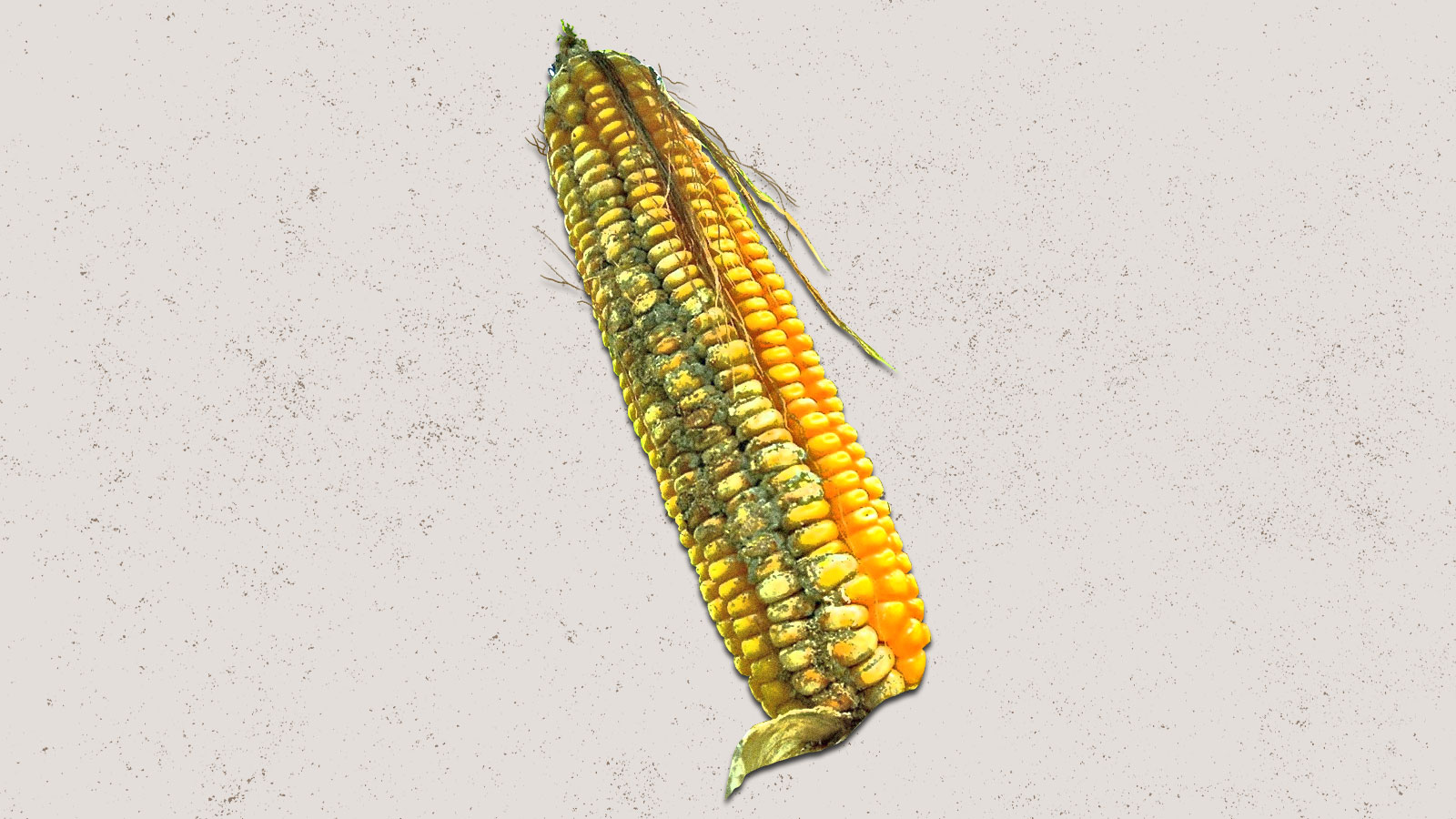Climate change is expanding the reach of aflatoxin, a chemical produced by a gray-green mold that infects corn crops and could threaten widespread damage to the country’s lucrative Corn Belt. According to new research, aflatoxin has been primarily confined to the South. But as hot and dry weather moves northward, fungal infections will move with it, hitting the Midwest more frequently and on a wider scale than previously seen.
The study, published in the journal Environmental Research Letters, found that under current climate change scenarios, aflatoxin contamination will increase in 89.5% of corn-growing counties in 15 states by the 2030s. This includes a number of states in the Corn Belt, such as Iowa, Illinois, and Indiana, which produce the majority of the United States’ corn — an $82 billion industry.
Although the U.S. has strong protections in place to prevent contaminated corn from reaching consumers, any increase in the food supply is concerning from a public health standpoint, said Felicia Wu, a food science professor at Michigan State University and one of the paper’s authors. “It’s a nasty thing to have in our crops,” Wu said.
Aflatoxin contributes to up to 155,000 cases of liver cancer per year, mostly in Asia and Sub-Saharan Africa, where contaminated products can more easily reach consumers; outbreaks in Kenya and Tanzania have killed hundreds. In the U.S., the Food and Drug Administration limits aflatoxin levels to 20 parts per billion for corn that’s destined for products like tortilla chips or feed for dairy cows, which can transfer the toxin into their milk. But even levels below the legal limit can be harmful, Wu said, with children and immunocompromised people being particularly vulnerable. No treatments for aflatoxin poisoning currently exist.
It’s difficult to tell how much aflatoxin is ultimately reaching consumers. Storage facilities called grain elevators mix multiple batches of corn together to dilute aflatoxin amounts to stay under the FDA limit. But because of high rates of testing error, the actual levels could be higher, said Charles Hurburgh, a grain expert at Iowa State University.
“Normally the grain industry figures that the natural blending will hold the levels below FDA [limits] … and expect that when the grain finally gets to the user, it’ll be okay,” Hurburgh said. “It’s a little concerning to think that climate change may start gradually raising those levels.”
Aflatoxin is produced by two different types of fungi, Aspergillus flavus and Aspergillus parasiticus, and is an extremely potent liver carcinogen. These fungi, which target corn as well as tree nuts and cotton, thrive in hot and moist environments. But drought conditions can encourage their growth by weakening the plant and making it more susceptible to infection. In 2012, a wave of hot and dry weather led to an aflatoxin outbreak in the Midwest, causing more than $1 billion in losses — a scenario Wu said will happen more and more frequently with climate change.
In a 2016 study, Wu and several other researchers estimated that climate change-related aflatoxin contamination would end up costing farmers up to $1.68 billion per year; since most crops are subsidized by federal crop insurance, a large portion of that loss would then be passed on to taxpayers.
But Wu says there are steps farmers can take to lower the risk of aflatoxin contamination: those who have access to water can irrigate their corn when conditions get hotter and drier, while advances in plant breeding and genetic modification have developed strains that are both more drought-tolerant and resistant to fungal infections.
Robyn Allscheid, the director of research and productivity at the National Corn Growers Association, says some producers are starting to think ahead in order to prevent the spread of aflatoxin, but she says that implementation hasn’t yet caught up with the research.
“These aren’t issues that are typically at the top of [growers’] minds,” she said. “We’re going to see sporadic losses still throughout the Midwest.”




